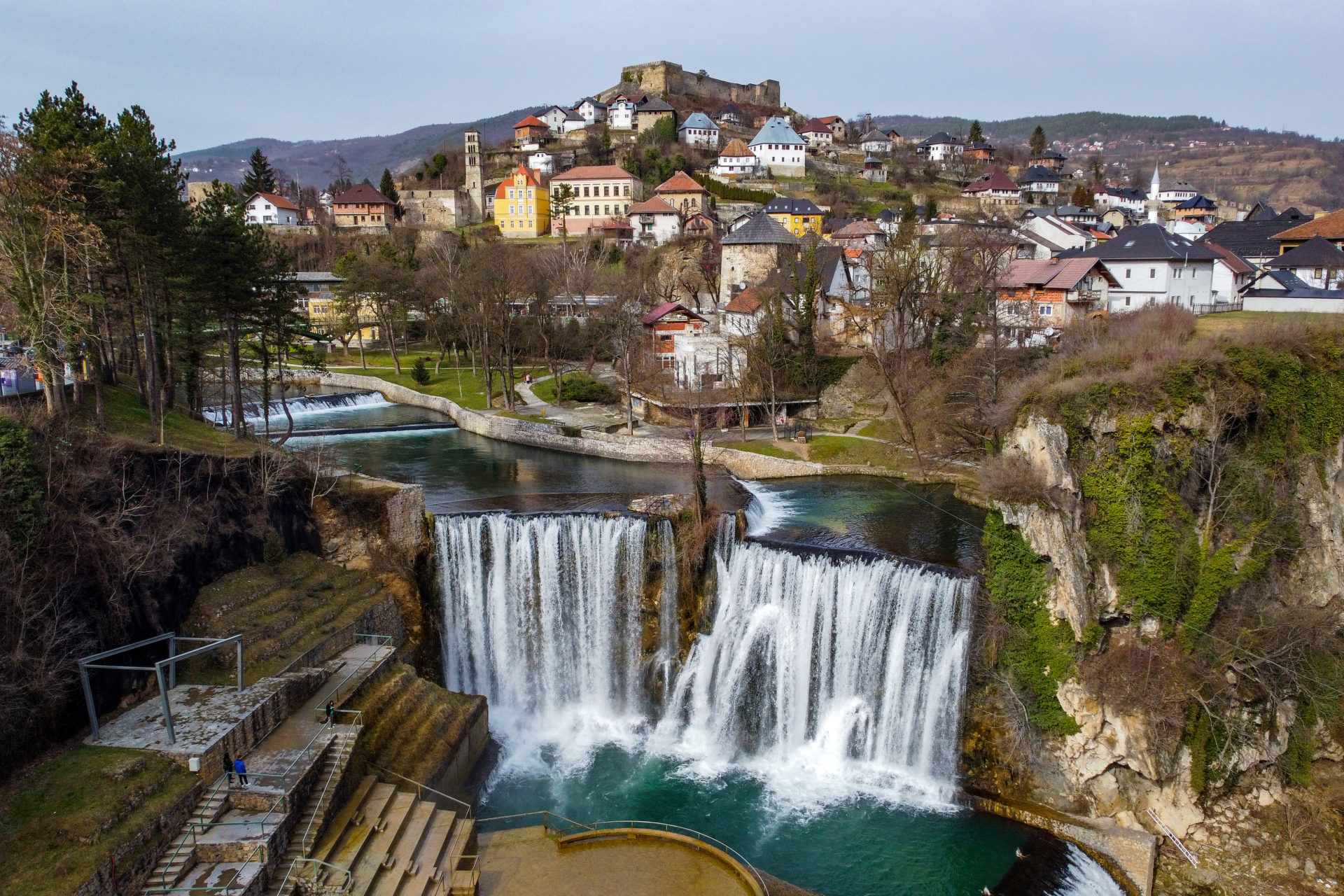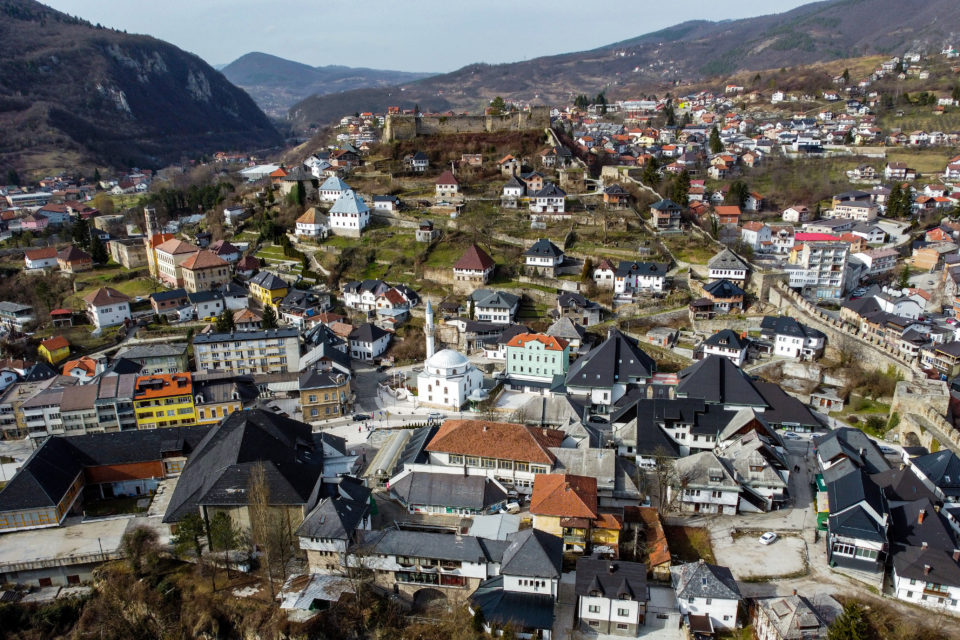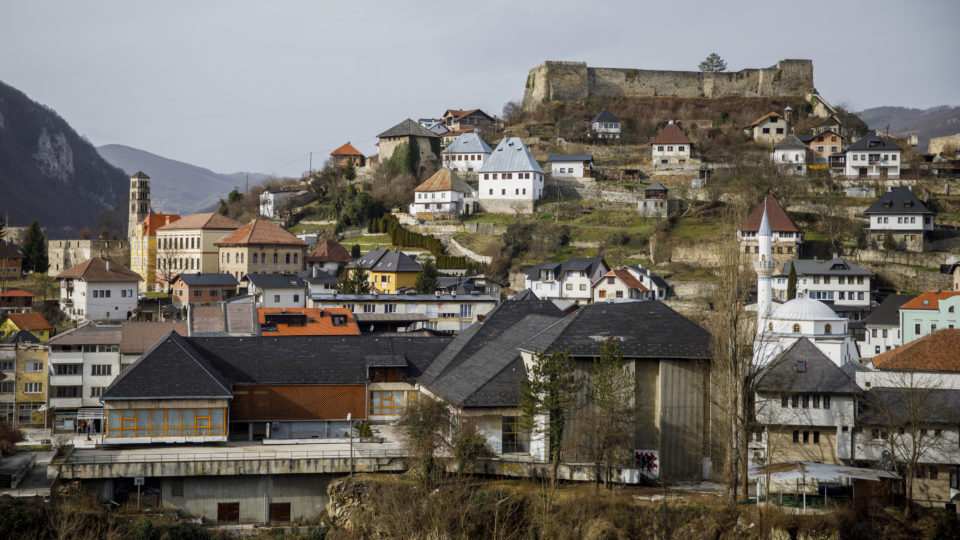
“After 620 years, Jajce Fortress still stands as a symbol of the city and a silent witness to its turbulent history,” recounts Slavica Drmić, history teacher at the Jajce elementary school in Kruščica.
Ancient foundations
The foundations of the god Mithra’s temple testify to the fact that the birth of the town of Jajce dates back to the third century AD. However, Jajce rose to prominence during the time of the medieval Bosnian state, otherwise known as the Kingdom of Bosnia. It was during that period, more precisely in 1396, that Jajce was first mentioned in written documents.
The founder of the city was Hrvoje Vukčić Hrvatinić, Grand Duke of Bosnia and Duke of Split, and it was under his rule that the city began to develop. It was then that the construction of the fortress began, and its walls still stand today as a reminder of the past. Then, with the coming to power of Stjepan Tomašević in 1461, the town of Jajce became the capital of the Bosnian Kingdom.
Franjo Leovac, guide at the Franciscan Museum, explains how Stjepan Tomašević’s rise to power occurred when he was very young, and at a rather difficult time.
“On the one hand, he was about to take over a kingdom that, at the time, was respected throughout the whole of Europe, but on the other hand, the mighty Ottoman Empire was coming from the East with a rather large army and a desire to expand.”
Great powers knocking at the doors
Slavica Drmić explains that the fortress was built on a 470 meter-tall hill during a time of great conquests and territorial expansions in Europe. The aim of the construction was to preserve the independence of the medieval Bosnian state and to protect the power of the then ruler Hrvoje Vukčić Hrvatinić. However, that purpose was not fulfilled.

After King Stjepan Tomašević refused to pay tribute to the Ottoman Empire in 1462, Sultan Mehmed Fatih II undertook a military campaign in Bosnia. The following year, Bosnia fell under Ottoman rule.
“Some 70 years after the construction of the fortress, the royal state of Bosnia fell under Ottoman rule. But the fortress and the city of Jajce survived, and even after that year, the fortress stood as a symbol of resistance and guardian of the city’s independence,” says Drmić.
Precisely because of the fear that the Ottomans would start penetrating the Kingdom of Bosnia, Stjepan Tomašević had begged the European rulers for help, but help did not arrive. When the Ottomans began to occupy some parts of the kingdom, the king fled from Bobovac to Jajce, and then from Jajce to Ključ. However, when Stjepan Tomašević surrendered in Ključ, he was returned to Jajce, where he was executed by order of Sultan Mehmed II.
Legend has it that Sultan Mehmed II ordered King Stjepan Tomašević to be buried in a place where Stjepan could not see his city, but the city could see him. The tomb is located in Zastinje, near Jajce, where in 1888 archaeologist Ćiro Truhelka excavated the king’s bones, and in 2004 the tomb was declared a national monument of Bosnia and Herzegovina.
“At the end of the 19th and the beginning of the 20th century, the remains of Stjepan Tomašević were briefly moved to Sarajevo, then to Vienna, and then they were returned to Jajce and given to the Franciscans to keep,” says Leovac.
During World War I and World War II, the bones were moved from the monastery to the church to save them from destruction. In late 1995 and early 1996, the remains were in Split. It was not until 1999 that they were finally returned to Jajce.
The struggle for Jajce
The Ottoman victory in Bosnia was followed by a turbulent period, filled with wars and battles.
“Shortly after the Ottoman conquest of Bosnia, in the summer of 1463, military action was undertaken by the Hungarian king, King Matthias Corvinus, which succeeded in capturing most of northern Bosnia, including the town of Jajce. He founded the Jajce banovina (province) with its headquarters in Jajce,” explains Drmić.

Due to its favorable position, and the fact that trade routes to Split led through it, the struggle between Hungary and the Ottoman Empire around Jajce continued until 1528. As Drmić says, after almost 130 years of its existence, Jajce waved the white flag because neither the inhabitants nor the city could withstand the burden of war any longer. In 1528, Jajce came under Ottoman rule and became part of the Bosnian Sanjak.
“The fortress’s founder did not succeed in his intention to preserve the independence of the state nor to protect his own power, but his success would be eminent in centuries to come. To this day, the story of these powerful world empires’s struggle for one beautiful city on the banks of two rivers, the Pliva and the Vrbas, remains,” says Drmić.
An exceptional city with a legendary name
Franjo Leovac explains that Jajce is unique in the length of continuous habitation in the city: “Jajce is the only city that has a history starting from the Middle Ages, probably even earlier. From the Middle Ages and the Kingdom of Bosnia all the way up until today, people still live in the town of Jajce, which we do not have in other towns,” he explains.
Numerous legends are associated with this city, and as many as three are connected with the name of the fortress and the city itself.
“The first legend has it that the fortress was built on the model of the castle in Naples, Castello dell’Ovo, which means ‘fortress of the egg’, and that the city was named Jajce after that. It is believed that at that time Hrvoje Hrvatinić had strong ties with Vladislav of Naples. Another legend claims that the city got its name because of its egg-shaped terrain on which the fortress was built. And the third legend says that, during the construction, the builders mixed eggs into the mortar in order to strengthen the structure of the fortress, and that that is how the town got the name it still bears today,” concludes history teacher Slavica Drmić.






